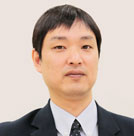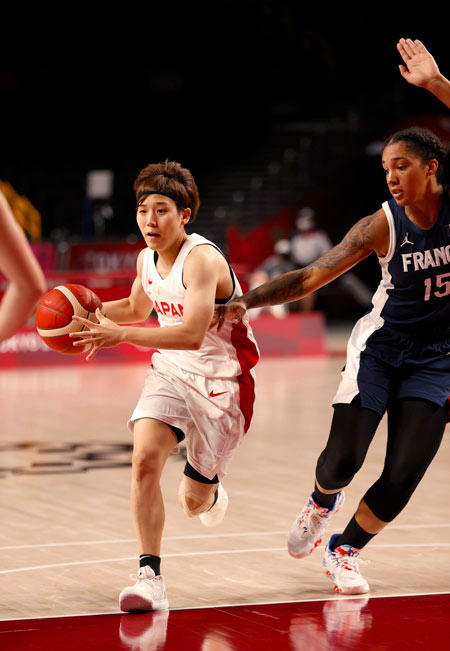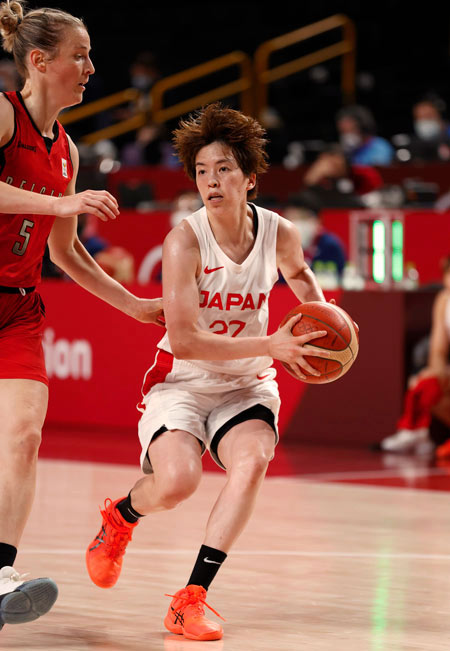Heartbreak in Montreal
Women’s basketball became an Olympic sport at the 1976 Montreal Games. Japan earned the right to compete there by placing second at the World Championship for Women the previous year and was considered a medal contender. Japan got off to a blazing start, defeating the United States 84-71 with its high-speed game. The US women’s team is the commanding force in the sport today, but its Olympic history began with a loss to Japan.
Japan swept past Canada in its second game but then lost to Czechoslovakia. Even if it did not stand a chance against the Soviet Union, Japan could at least earn a medal with a win over its next opponent, Bulgaria. Japan had a 13-point lead with 8 minutes to go, but then its offense sputtered to a halt. It fell behind with 44 seconds remaining and eventually lost 66-63. With this heartbreaking defeat, Japan saw its dream of winning an Olympic medal slip away.
A Dream Come True, Nearly Half a Century Later
In its subsequent Olympic appearances, the team had never reached the semifinals, finishing seventh at the 1996 Games in Atlanta, tenth at Athens 2004, and eighth at Rio 2016. It was not until Tokyo 2020 that the dream of winning a medal finally came true—45 years after the disappointment in Montreal.
One secret to the success of the Akatsuki Five—as the hoopsters from the Land of the Rising Sun (akatsuki means “daybreak”) are nicknamed—was the accuracy of the team’s three-point shots. It had an average 38.4% success rate over the six games played, highest among competitors in Tokyo, and the team also scored the most three-pointers with 73, far ahead of second-ranked France with 49. This was a major factor in overcoming Japan’s height disadvantage.
The three-point goal, incidentally, did not yet exist at the Montreal Games. One can only wonder what Japan’s fate might have been had this rule been in place at the time.
Showdown with the Reigning Champs
Japan relied on its hallmark speed to knock out higher-ranked France 87-71 in the semifinals, ensuring the team of at least a silver medal. The nation exulted at the unexpectedly strong performance of the Akatsuki Five, which earned the right to play for gold after securing an Olympic medal 45 years after the Montreal heartbreak.
This, in fact, was exactly what Tom Hovasse, who took over as Japan’s national team head coach after the Rio Games, had anticipated. Following Japan’s semifinal win over France, Hovasse commented, “Four-and-a-half years ago, at my press conference, I said my goal or my dream is to play America in the gold medal game in the Tokyo Olympics.”
The Americans, though, were fully prepared, having closely analyzed the Japanese game plan. The six-time defending Olympic champions took control from the start, completely shutting down Japan’s two top shooters—Saki Hayashi and Yuki Miyazawa—who managed to attempt only three three-pointers between them, none of them successfully. Japan’s set plays, designed to get the ball to its best shooters, could not penetrate the Americans’ formidable defense. With its offense thrown off balance, Japan was never able to get off the ground.
On offense, the United States dominated the low post, led by 203 cm Brittney Griner, who scored 30 points, and 193 cm A’ja Wilson, who added 19. And when Japan shifted its focus to defend against the inside game, the United States began getting the ball out to its sharp shooters Sue Bird—who was competing in her fifth straight Games—and Diana Taurasi. Breanna Stewart, at 191 cm, grabbed 14 rebounds, not giving the Japanese a chance to turn the tide. The US players also used their towering height advantage to notch up 12 blocked shots.
But the Akatsuki Five refused to give up, despite being thwarted on offense and overwhelmed on defense. They continued to play tough, drawing fouls and inducing errors from their opponents and creating openings with set plays, over 100 variations of which were in the game plan. No matter how hard they tried, though, they could not break through, eventually losing by a score of 90-75. And while they fell short of a gold, the 12 team members proudly became the first medalists—either in men’s or women’s basketball—in Japan’s Olympic history.
Next Stop, Paris
Although the exhilarating showing by the women’s basketball team came as a surprise to many, the development of top-class skills was many years in the making. The fast-paced style of play and the ability to score three-pointers were already in evidence at the 1996 Atlanta Games. And the aggressive use of the full-court press goes all the way back to the 1976 Games in Montreal.
These are strategies that were honed over the years in order to compete with often much taller opponents. In that sense, the medal-winning Akatsuki Five owe a debt to the tireless effort and dedication of all past team members.
Of course, it was not just by embracing history that the Tokyo 2020 team was able to reach the finals. Head coach Hovasse developed a game plan that incorporated the cutting-edge tactics of top National Basketball Association teams like the Golden State Warriors and Houston Rockets. And as he has stated that he hoped to turn Japanese basketball into a global standard, a day may come when the “Japan model” is emulated by other countries around the world.
The women’s national team continued its success two months after Tokyo by winning FIBA Asia Cup 2021 under new head coach Toru Onzuka—an unprecedented fifth straight title for Japan. Fans now wait in eager anticipation as the Akatsuki Five will be aiming for even greater heights at the 2024 Olympic Games in Paris.
Translated by the SSF from an article published in Japanese on September 13, 2022.

Hironori Tanigama
Professor, Faculty of Law, Toyo University
Born in Tokyo in 1980. Received his PhD in sports science from Nippon Sport Science University and is an expert on sports history. Is the author of many books, including Aruku Edo no tabibito tachi (Journeys on Foot in the Edo Period) and Orinpikku, Pararinpikku o tetsugaku suru: Orinpian ikusei no jissai kara shakaiteki kadai made (Philosophical Exploration of the Olympic and Paralympic Games: From the Realities of Fostering Olympians to Social Issues) (co-author).



